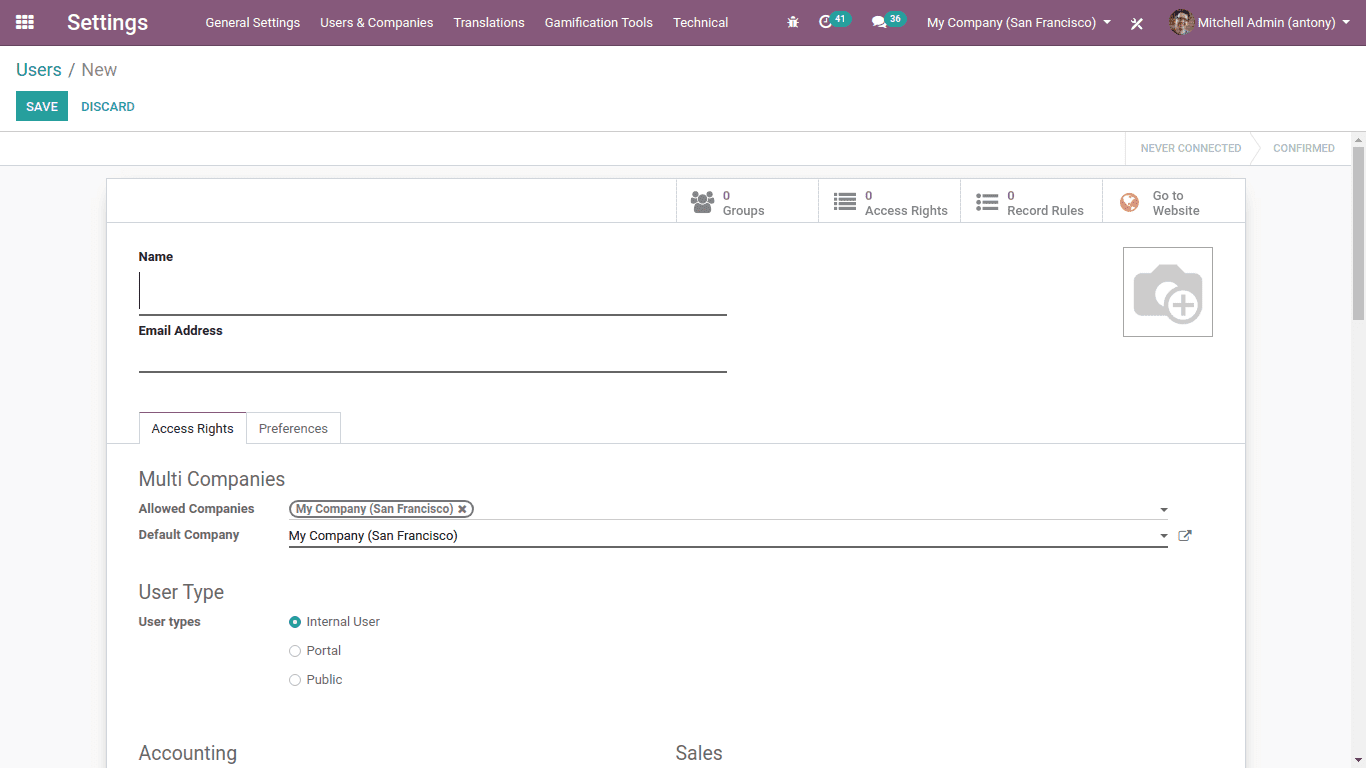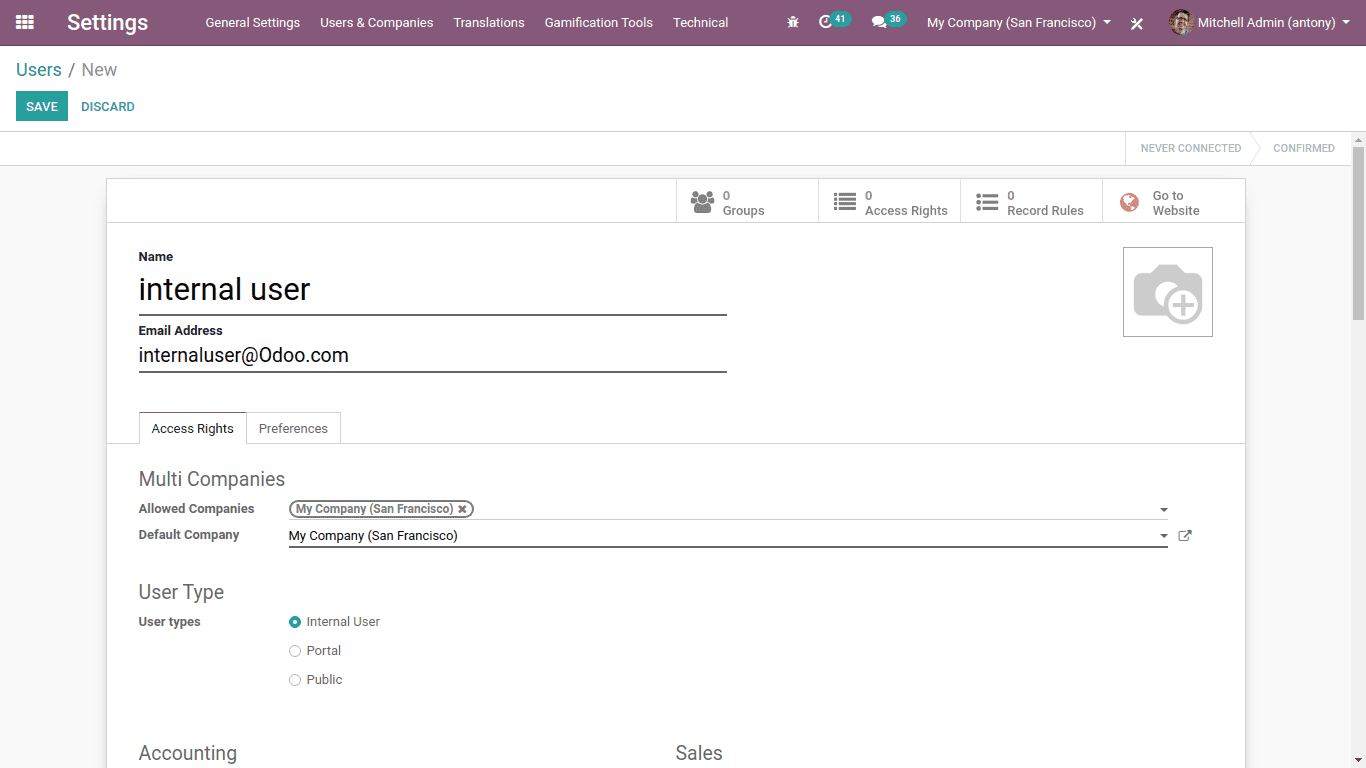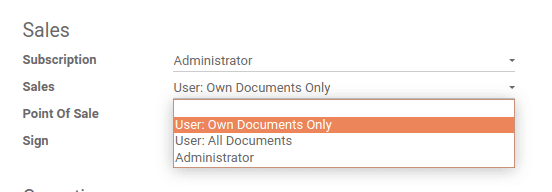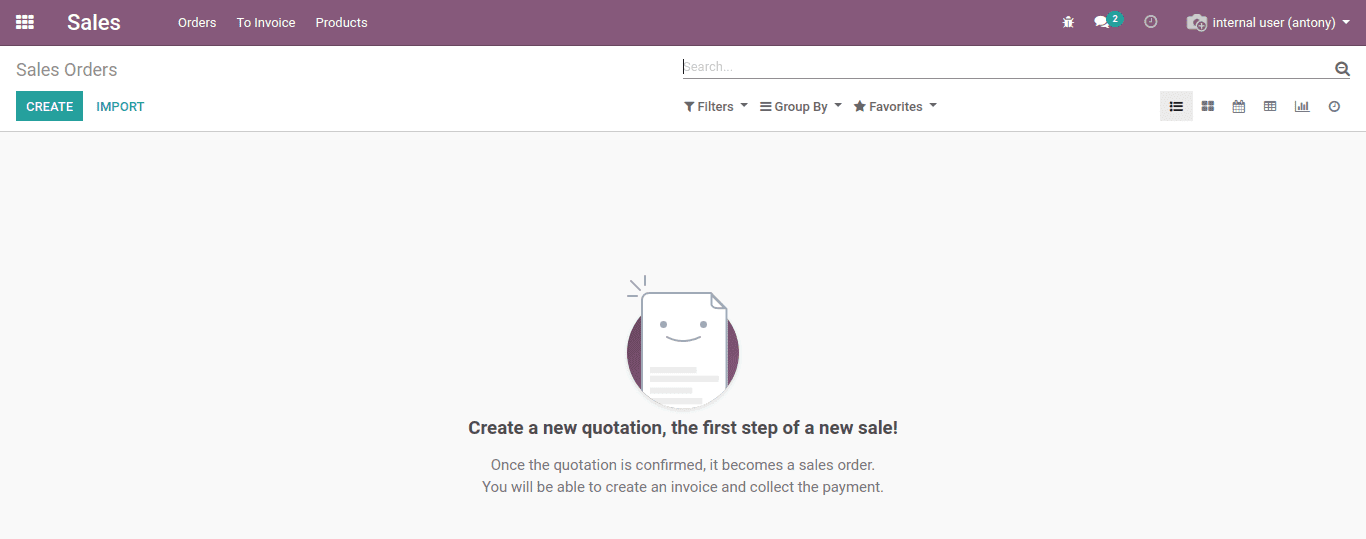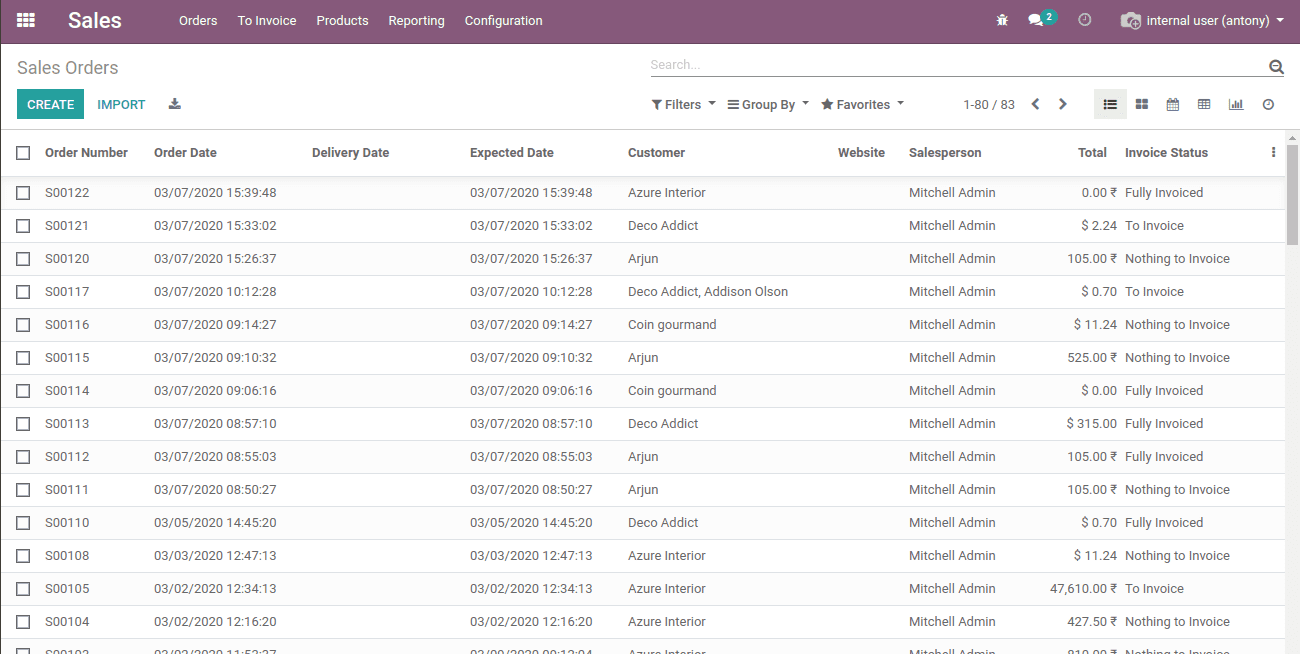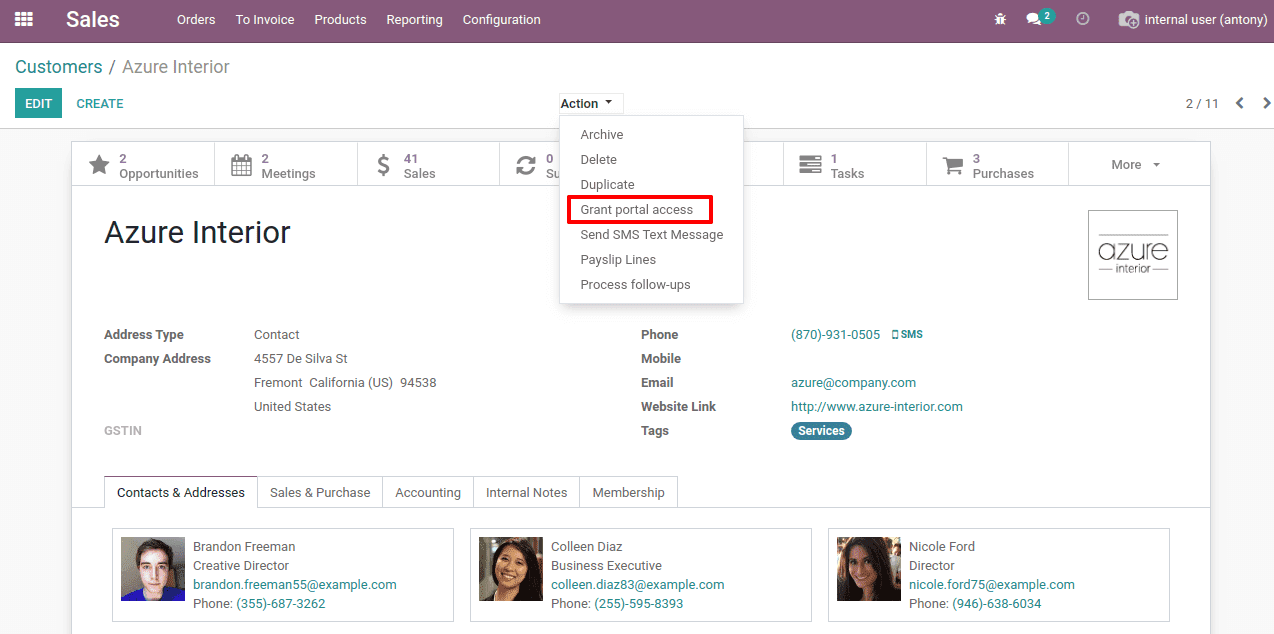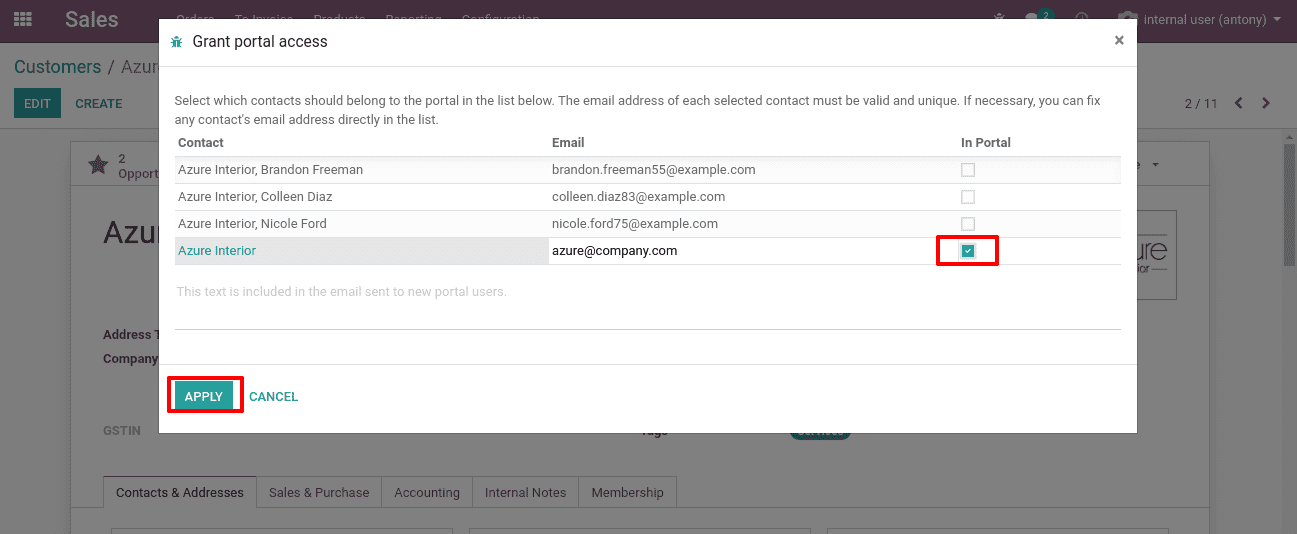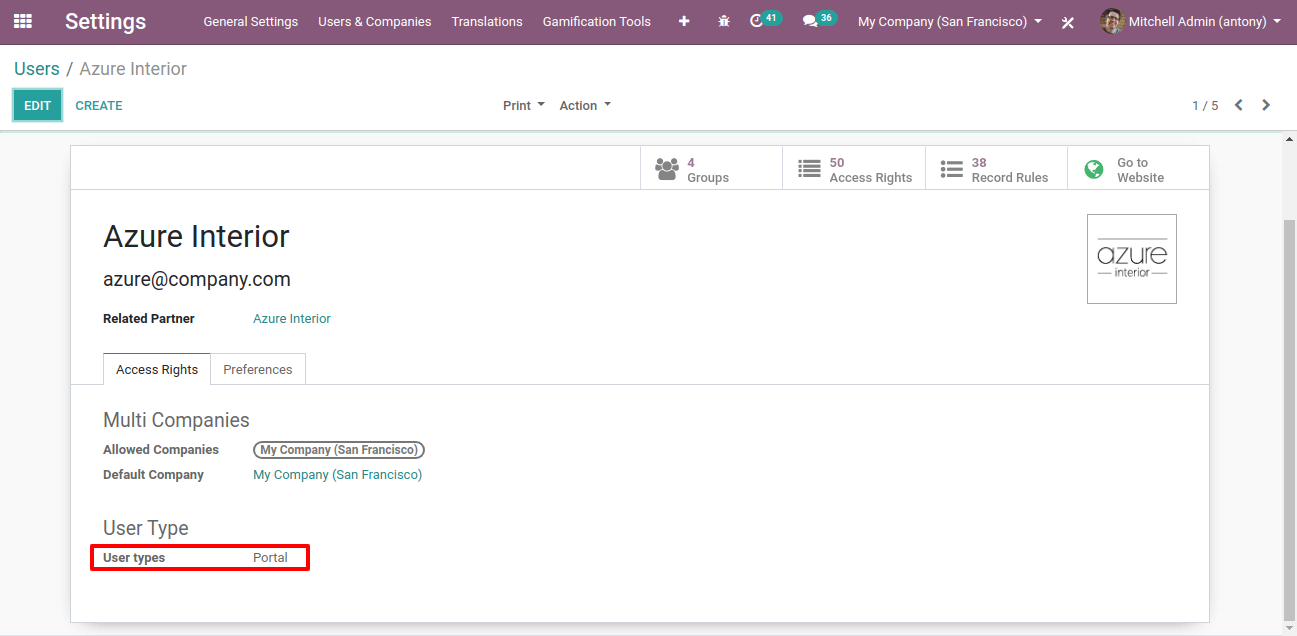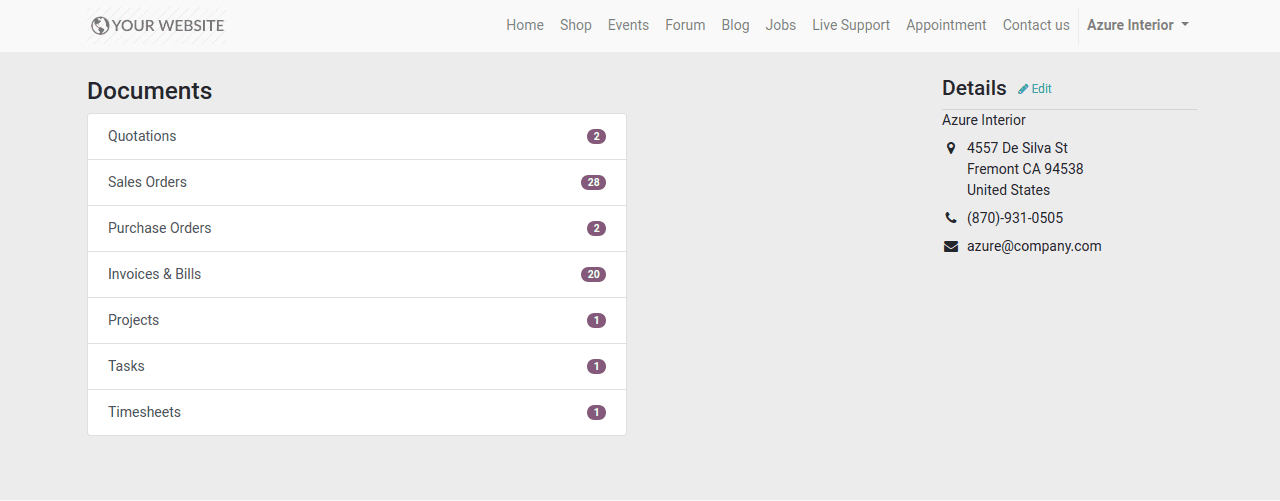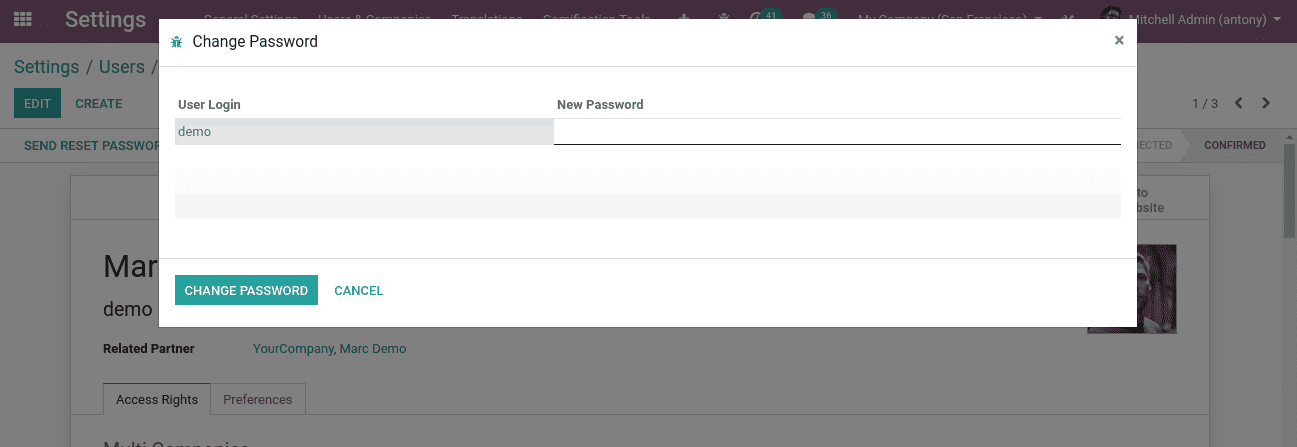
Types of user in Odoo 13
Access to official information in the group tends to vary from one particular person to a different. This relies upon fully on the function or job standing of the particular person in the group. Managers have entry to almost each report in the workplace as they’re in a supervisory place.
The employees, nonetheless, would only present entry to their information pertaining to work. The case shouldn’t be totally different for a vendor and buyer. There will probably be very restricted entry to official information for them too. It is due to this fact very important that the corporate holds all protocols and gateways for transferring info. User configuration and system accessibility permits making certain that solely related information are transferred on to every user
Creating user classes ensures buyer entry to their very own paperwork and solely the required works are forwarded. Odoo distinguishes customers with three differing kinds of entry primarily based on the user class. With Odoo we will simply handle that.
Configuration of users with totally different user varieties or types.
To configure this now we have to activate the Developer Mode.
Note: A user could solely be created by the Manager(admin).
Select the menu User & Company > User
Having accessed the user web page click on on the ‘create’ button.
This is the form to create a user. There are some necessary fields. odoo user type
Name: We have talked about the user name
Email: Mention additionally the E-mail address
Now underneath the ‘Access Rights’ tab, we will examine the totally different user types.
Types of Users
– Internal user
– Portal user
– Public user
Internal User
In this instance, one can have access to the appliance. We will outline entry to each module right here.
Let’s create an internal user.
How it really works in sales.
Tap on the dropdown listing of the sale. There one can see several security classes offering the associated framework for numerous forms of internal user entry. We could alter the authorization manually by modifying the related module’s.csv file.
We have three permits for the sales module. odoo user type
User: Own Documents Only
Here the user will get entry only to their very own created documents.
User: All paperwork
User: Administrator
Here the user will get all of the permission {that a} manager has.
Note: These features shown above are inclined to differ from one module to another.
Let’s examine the way it works in every module.
Purchase module odoo user type
User: All documents could be accessed here.
Manager: He can entry the reporting, configuration, and settings of the module. Only he/she will lock and unlock the documents.
Inventory module
User: All documents of this module are accessed.
Manager: can entry the reporting and configuration of the module.
Accounting module
Billing: Access to shopper and product-specific documents.
Accountant: Access to Overview of Accounts, Reports, and configuration.
Advisor: Will have entry to Configuration and Accounting menu settings.
Manufacturing
User: Will have entry to overview, planning, operations, master data, and reporting
Manager: Will have the configuration and settings choices additionally
Quality
User: Will have entry to Overview and high quality control.
Manager: Will have entry in the Quality Control, to reporting, configuration tab and control points. After the user’s validation, the supervisor will shift levels from go to fail.
PLM
User: Will have Document entry, overview, Engineering Change Orders, and master data.
Manager: Will have entry to reporting, configuration and admin can solely create phases in engineering change orders.
Employees
Equipment Manager: Access to All staff and badges. In this module cannot carry out any operations on the documents.
Officer: Will have entry to the department menu, Challenges and History of Goals in Challenges tab. Officers can do any operation.
Manager: Configuration control, and might construct contracts.
Leave
Officer: Will have entry to all information and might conduct any operation.
Manager: Able to see the module’s overview.
Recruitment
Officer: Will have entry to all paperwork, and execute each exercise on this doc.
Manager: Able to entry Configuration Menu Settings.
Expenses
Officer: Will have entry to the Menus for My Expenses and Expense Report.
Manager: Access to Expenses Report and Configuration.
Timesheets
User: Will have entry to all information, plus can execute any operations on information.
Manager: Access all of the reporting and configuration processes on this module.
Attendance
Manual attendance: Access to constructing your individual attendance.
Officer: Access to report on attendance and administration of attendance.
Manager: Access to Settings Menu.
Appraisals
Officer: Can have entry to all appraisal
Director: Have entry to reports.
Payroll
Officer: Can have entry only to created documents.
Manager: Have entry to all paperwork, Batch of Payslips, and Settings.
Events
User: Have entry to all information however cannot build and edit events.
Manager: Will have entry to the reporting and configuration settings for each course of on this module.
POS
User: Dashboard, orders, and products could be accessed. Users are solely permitted to launch a brand new session.
Manager: Have entry to reports and settings The supervisor is ready to resume a session and shut it.
Website
Limited Editor: Able to entry the dashboard and open the location.
Editor and designer: Will have entry to this module’s settings menu and might have extra web site features.
Administration
Rights of access: Have entry to configurations in apps. They are going to get menus like Users & Companies and Translations.
Settings: The Dashboard and General Configurations will probably be provided.
Portal User
A Portal user is a user with entry to particular portals. This kind of user simply has its personal documentation available. Portal User signifies granting buyer or distributor entry to the system.
We are additionally capable of create a portal user with the assistance of a contact module. Let’s see the way it works. We can choose a contact.
odoo user type
Here now we have chosen the contact “Azure Interior”. Under the ‘Action’ button now we have an possibility known as “Grant Portal Access”. Clicking on it a pop-up wizard will seem on which we will make Azure Interior a ‘Portal user’.
Enable the portal entry and click on on the “Apply” button.
At the second a portal user is created with that companion‘s contact title.
This is the portal user now we have simply created for Azure Interior. We can set a Password for it and let’s login to it.
When logging in, that is the view of the portal user web page.
You can see all of the documentation related to that firm in this picture. You get extra data on that if you click on on it.
Public User
It’s a kind of user the place public customers can use a URL to entry our web site. Access is restricted to public customers.
How can we set passwords for customers?
Upon forming a user underneath the “action” menu one might see an possibility for altering passwords. A window of user username and password pop-ups if you click on on it.
There you may resolve the user’s new password and click on on the password change button. With this login, I d (Email) and password the user can then signal in.
Portal user vs Internal user
An worker is an inner user (perhaps a boss or user) entry is granted to applications.
Whereas, the shopper or distributor might be the Portal user. They solely have entry to the web site whereby they obtain their corresponding records.



